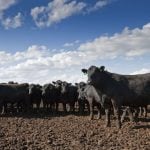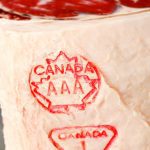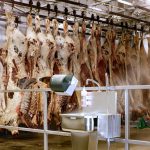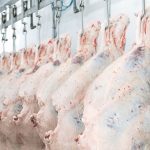
Tag Archives beef production

Farming “the Big Land”
Here’s what it’s like to farm in Labrador
If there is a cattle-related analogy for the “chicken-and-egg” scenario, it might be farming in Labrador, Canada. There isn’t a single abattoir because there has been no livestock to process. And also there has been no livestock, because there is no abattoir. It’s something Darren Dinsmore, Labrador’s only beef farmer, hopes to change. Dinsmore, who […] Read more

Tyson Foods, Cargill idle Kansas beef plants due to snowstorm
Blizzards shut down roads, stranded some workers at packing plants overnight
Tyson Foods and Cargill said on Tuesday they suspended operations at beef plants in Kansas due to a massive snowstorm, reducing U.S. meat production.

Updated Certified Sustainable Beef Framework released
The program, launched in 2017, came up for its five-year review in 2022
A new and improved Certified Sustainable Beef Framework has been released following its first, five-year review announced the Canadian Roundtable for Sustainable Beef (CRSB) today.

CCA reports: Young leaders in Canada’s beef industry step onto international stage
From the November 2023 issue of Canadian Cattlemen
It is often hard to quantify the value of our participation at international conferences as the results aren’t always immediate. But having Canada’s experience and leadership in sustainable beef production at the table during these talks is starting to move the needle on the perceptions about environmental effects of beef production and how a regional […] Read more

Market Intelligence Update from Canada Beef: U.S. imports of Canadian beef see continued growth
Sales of Canadian beef In August, U.S. imports of Canadian beef moved higher for the second consecutive month. August beef imports totalled 85.4 million pounds (38,755 tonnes) carcass weight, four per cent higher than August 2022 and three per cent higher than the five-year average for August. August is typically the peak month for Canadian […] Read more

Overcapacity crunch time for beef processing plants
Prime Cuts with Steve Kay
No fewer than 10 entities or individuals have announced plans to build new beef processing plants in the U.S. I sure hope they are looking at the current and future size of the U.S. beef herd and how much processing capacity the industry currently has. Should they do so with an open mind, they might […] Read more

Klassen: Lower beef production forecasts support feeder complex
Major feedlots seen aggressive on quality calves
Compared to last week, western Canadian yearling markets traded $2-$4 on either side of unchanged. Calf markets were steady to $5 higher on average, with stronger buying interest on preconditioned weaned steer calves. Light calves weighing under 500 lbs. appeared to jump $10-$20 in certain regions. This past week, focus of finishing feedlots switched from […] Read more

Beef demand remains resilient
Prime Cuts with Steve Kay
Beef demand remained remarkably resilient this summer in the U.S., despite record-high retail prices and much cheaper competing meats. The question that I posed in my June column of how demand would hold up has so far been answered with a “better than expected.” But demand continues to face challenges, not just for consumers but […] Read more

What’s up with the beef industry down under?
A researcher who has lived and worked in both Canada and Australia offers some perspective on this beef-producing powerhouse
Australia is one of the largest beef exporters in the world and will have nearly 29 million head of cattle this year, according to Meat and Livestock Australia. New South Wales and Queensland account for more than 70 per cent of the red meat and livestock off-farm sales. The red meat industry, which includes beef, […] Read more

Cattle herd poised to expand while economy cools
Market Update with Jerry Klassen: A small change in supply has a large influence on the price
Several studies from universities in Canada and the U.S. analyze the financial returns for feedlot operations. Feeding cattle is a pure competitive market. One characteristic of a pure competitive market is that the margins drop to the least-cost producer. In the long run, the margins are negative. Two other characteristics are unique to the cattle […] Read more



